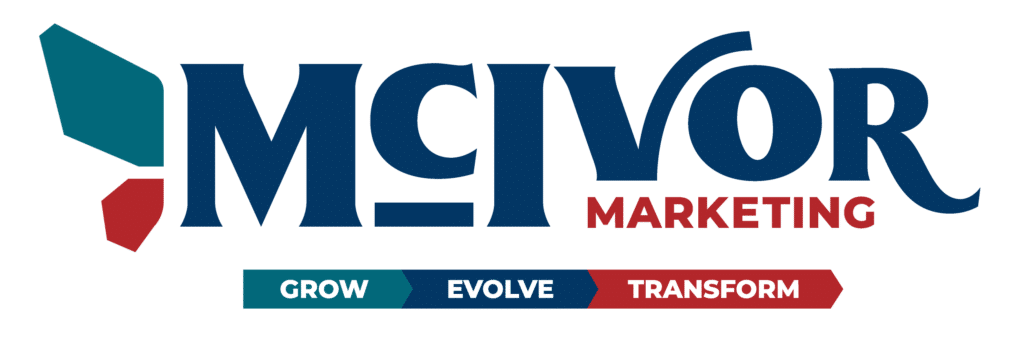17 ESSENTIAL CONTENT MARKETING STRATEGIES FOR SUCCESS IN 2024
Utilizing a variety of content marketing types enables you to address your audience’s diverse needs, preferences, and behaviors. This approach helps you connect with more people more frequently, leading to increased business opportunities.
Here are 17 content formats to explore:
1. BLOG POSTS
Blog posts remain one of the most powerful tools for engaging with your target audience.
They offer valuable insights, enhance brand awareness, and boost search engine rankings. By addressing your audience’s challenges, blog posts help build trust and loyalty. This trust can quickly lead to business growth.
According to Semrush’s State of Content Marketing 2023 report, 55% of content marketers say that short-form articles or long-form blog posts are among the top-performing content types.

2. INFOGRAPHICS
Infographics present information in a clear, visually engaging format with minimal text.
By using graphics, charts, and simplified explanations, infographics can grab attention and make complex ideas easier to understand, appealing to a variety of audiences and learning styles.
3. VIDEOS
Video marketing captivates audiences through dynamic storytelling, combining visuals and audio.
Videos are essential in niches like home cooking, sports, and travel, as static images and text struggle to engage in the same way. However, videos can benefit any business by effectively showcasing how to do something or how a product works.
You can identify the types of videos your audience prefers by conducting YouTube keyword research. Remember to include informative captions and text introductions to help both viewers and search engines better understand your content.
Other video SEO techniques include optimizing descriptions and creating eye-catching thumbnails.
4. PODCASTS
Podcasts offer easily accessible audio content for on-the-go audiences, allowing you to showcase empathy, expertise, and authenticity that resonates with listeners.
They can be a powerful tool for increasing brand awareness in hard-to-reach markets while highlighting your brand’s personality.
With the right equipment, producing podcasts can be straightforward.
Distributing through a podcast network, like the one shown below, can expand your reach significantly—especially when you apply podcast SEO best practices.
Even when utilizing a podcast network, you can still integrate your episodes into your website and social media campaigns. This enables you to reach both podcast listeners and those who prefer more traditional digital content.
You can also repurpose written content into podcast episodes (and vice versa), a strategy that works well with many other content types on this list.
5. SOCIAL MEDIA CONTENT
Social media content is short-form and can include text, audio, images, video, or a mix of these, enabling direct engagement with a broad audience.
It offers the flexibility to create original content while also promoting content you’ve shared on other channels.
6. EBOOKS
Ebooks are usually PDF documents that provide detailed information in a visually engaging format.
They are a popular form of gated content, meaning users must provide their personal information to access them.
A quality ebook should be thorough and showcase expertise, which requires time and knowledge. To streamline the process, consider repurposing content from your website into an ebook.
Alternatively, you can break down an existing ebook into multiple articles or videos.
7. CASE STUDIES
Case studies are real-world examples that highlight how your business has successfully addressed client or customer challenges.
Case studies build trust by showcasing real, measurable results—an example of social proof, which is a powerful tool for converting prospects into customers. They resonate with your audience by using engaging storytelling and relatable customer experiences.
To craft effective case studies for your website, collaborate with satisfied customers who are open to sharing their stories.
8. MEMES
Memes are images, videos, or text that use humor to comment on culturally relevant events or ideas. They’ve become a powerful marketing tool because they’re simple, relatable, and highly shareable.
Memes are also great for building brand personality and awareness, helping you connect with audiences and humanize your business. You can use them in written content on your website or across social media.
If memes align with your brand voice and style, consider incorporating them into your content marketing strategy. Just ensure they’re timely and relevant, as an off-point or unfunny meme can miss the mark.
9. USER GENERATED CONTENT
User-generated content (UGC) is any content created by customers or fans and then shared or reposted by your brand.
It’s highly effective for increasing brand awareness and driving conversions, as it serves as authentic social proof, reflecting the genuine experiences of real customers and fans.
Common types of UGC include:
- Blog post comments
- Product photos
- Forum discussions
- Social media posts
- Unboxing videos
Since UGC significantly influences potential customers’ buying decisions, encourage your audience to create and share content related to your brand. For instance, create branded hashtags and ask customers to use them on social media, then repost their content on your channels with a shoutout.
When used effectively, UGC can be one of the most impactful forms of content marketing.
10. NEWSLETTERS
Newsletters are a popular form of email marketing, consisting of regular messages centered around a specific theme, like content marketing tips. They offer a direct line of communication with customers and prospects who have opted in, signaling their interest in hearing from you.
This connection helps build relationships with subscribers, increasing the likelihood they’ll become paying customers.
To guide them toward a purchase, include calls to action (CTAs) that lead to sign-ups or valuable content. You can also monetize newsletters by incorporating ads, and repurpose blog content for your newsletters (and vice versa). Track open rates and engagement to evaluate performance, and adjust your strategy based on what resonates with your subscribers.
11. FREE TOOLS
Free tools, such as checklists, templates, and calculators, are resources you offer visitors at no cost.
These tools can drive traffic while building trust and loyalty, as they provide immediate value to users. They can also attract valuable backlinks, which can boost your SEO, and showcase your business’s expertise by offering practical solutions to customer problems.
Leverage free tools for lead generation, much like you would with ebooks, or use them as shareable content on social media. You can pair these tools and templates with blog posts or create dedicated pages for them.
Ensure you’re offering something valuable to your users, focusing on areas where your expertise shines.
12. COURSES
Courses are a form of content marketing that provide in-depth learning experiences, helping users develop valuable skills.
These courses help build trust, credibility, and loyalty for your business while showcasing your expertise in a specific topic. Satisfied users may share their experience, possibly through social media or backlinks, expanding your brand’s reach.
Courses can also act as effective lead generators or even generate direct revenue.
13. WHITE PAPERS
White papers are detailed documents that educate readers on specific issues, solutions, or technologies.
They offer an in-depth exploration of complex topics, providing the data and insights stakeholders need to make informed decisions.
As a result, they are frequently used in business-to-business (B2B) content marketing.
14. TESTIMONIALS AND REVIEW
Testimonials and reviews are powerful tools for providing social proof. Testimonials work particularly well for B2B or software-as-a-service (SaaS) content marketing, as they are typically more formal and detailed.
The goal is to ask satisfied clients to share a positive statement about your product, service, or business, which you can then feature on your website.
Reviews are typically more effective for business-to-consumer (B2C) content marketing, as they are less formal and easier for customers to submit.
To encourage reviews, you can email recent buyers and ask them to leave feedback and a star rating on your preferred platform.
For ecommerce sites, consider displaying these reviews directly on your product pages.
It’s also beneficial to gather reviews on third-party platforms that your audience trusts and frequently uses.
For local businesses, aim to collect Google reviews, as having a higher quantity and quality of reviews can improve your visibility in map results.
15. INFLUENCER MARKETING CONTENT
Influencer marketing involves partnering with content creators, such as bloggers or Instagram influencers, to promote your brand to their audience through their preferred platform.
Since many people trust the opinions of their favorite creators, this approach is an effective way to expand your reach and build credibility with your target audience.
16. WEBINARS
Webinars are online seminars that offer a valuable platform for sharing your company’s expertise and generating leads.
Typically, the host live-streams a presentation on a specific topic, with the option for attendees to ask questions in real time. Webinars can also be pre-recorded.
After the event, you can make the recorded session available for others to view.
17. RESEARCH REPORTS
Research reports present findings from original research you’ve conducted, often to address specific questions your audience has about a particular topic.
This method is highly effective for generating backlinks, as writers may reference your report as a credible source.
HOW MCIVOR MARKETING CAN HELP YOU BUILD AN OPTIMIZED MARKETING STRATEGY
McIvor Marketing can help you build an optimized marketing strategy by tailoring a data-driven approach that aligns with your business goals. Our team of experts works closely with you to identify key opportunities, analyze your audience, and develop customized campaigns across various channels. From SEO and content marketing to paid advertising and social media, we ensure each aspect of your strategy is fine-tuned for maximum impact. By continuously monitoring performance and making adjustments as needed, we help you achieve sustainable growth and stay ahead in a competitive market.
Want to Read 5 Marketing Tips for Small Businesses?
Check out this blog post and see if your business is currently tackling these Top 5 Marketing Tips. If you have questions or find you need help in an area, reach out!
Like What You Read? Share It!




